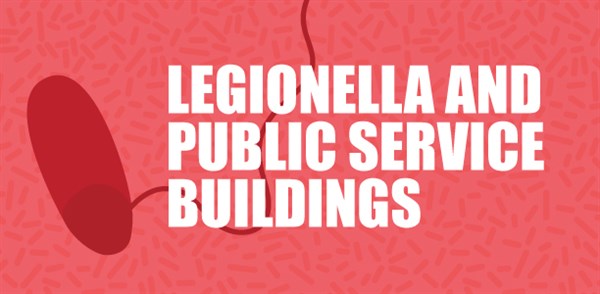Public Services and Procurement Canada has been engaged in a pilot project to test for legionella, an article in the Globe and Mail has revealed. The new technology by Ottawa-based Spartan Biotech has confirmed the presence of legionella in several federal public service buildings, leading some members to wonder if they are at risk of developing legionnaire’s disease.
The new technology proposed by Spartan Bioscience – the Spartan Cube – can test for legionella in minutes – a significant improvement to the timelines over conventional lab tests which can take two weeks to obtain results.
While this new technology is interesting, members should know that Public Services and Procurement Canada conducted this pilot project with public servants’ safety in mind. Spartan Bioscience’s legionella-testing technology is not yet commercially available and, from what we’ve been told, has not yet been fully validated. For these reasons, PSPC continued to conduct conventional lab tests alongside the tests it conducted with the Spartan Cube. The PSPC legionella protocol was followed throughout the pilot period.
“I can absolutely understand that members might be concerned, but I’ve been assured by PSPC that they erred on the side of caution,” said CAPE President Greg Phillips. “Throughout the pilot project, PSPC continued to follow the parameters set in the legionella protocol – a protocol that was developed in collaboration with public service unions, a protocol that meets or exceeds regulatory practices and standards.”
In 2012, a legionnaires outbreak killed 14 people working in Quebec City. The affected complex housed a labour federation, a bank, a donut shop and a dental clinic. In the wake of this outbreak, Public Services and Procurement Canada approached labour unions to collaborate on a legionella protocol aimed at risk reduction in its buildings. The department is responsible for 70% of federal government buildings.
The protocol aims to reduce the ability for legionella to propagate and sets out parameters for regular testing.
Legionella isn’t dangerous to human health unless it becomes airborne and aspirated. Drinking water contaminated with legionella does not cause legionnaire’s disease unless it’s aspirated. Common sources of airborne legionella include building cooling towers (where water droplets are aerosolized), showerheads, hot tubs, fountains and water features. More importantly, the bacteria rarely poses a risk unless it is allowed to reach high concentration levels. When it comes to cooling towers, it’s generally understood that 10 to 1,000 colony-forming units (cfu) requires intervention while anything above 1,000 cfu poses a threat to health and requires decontamination.
Factors that favour legionella growth include a temperature range between 20 and 50°C, water stagnation and a lack of system cleanliness. Building owners need to monitor cooling towers and keep them clean to prevent the bacteria’s propagation.
The PSPC legionella protocol mandates monthly testing of cooling towers. It calls for disinfection interventions when legionella levels reach >10->1,000cfu/ml (C2-Level Orange). Should levels reach >1000 cfu/ml (C3-Level Red), water dispersion is stopped and cooling towers are cleaned and disinfected before the system comes back into service.
This is in keeping with existing legionella regulations in the few locales where they exist. Quebec is the only province in Canada that has a regulatory framework around legionella; it mandates monthly testing, corrective measures for results between >10->1,000 cfu/ml and decontamination for results over 1,000 cfu/ml. New Zealand, Singapore and New York City each have regulations requiring action at levels above 1,000 cfu/ml and regular testing ranging from every 30 to 90 days.
In short, the PSPC legionella protocol is both cautious and in line with other regulatory frameworks. The goal ought to be expanding the protocol to government buildings outside the PSPC portfolio.
“What I would like to see is a government-wide strategy to expand this protocol beyond the buildings managed by PSPC,” said Phillips. “Thirty per-cent of government buildings aren’t covered by this. Additionally, without national regulations in place, private-sector buildings might not have any testing plans in place.”
According to the Centers for Disease Control and Prevention, legionnaire’s disease has been on the rise in recent years. In a 2014 report, Public Health Ontario noted an average increase of 39% each year since 2009. It’s unclear whether the disease is itself on the rise, as a result of increased reliance on cooling towers as global temperatures rise, or because of increased clinical awareness. Legionnaires often presents as a severe pneumonia and can go undiagnosed.
Middle-aged people and seniors are more susceptible to the disease. People with compromised immune systems and smokers are also at a higher risk. The disease is treated with antibiotics, but it does, unfortunately, proves fatal for one in ten people.



